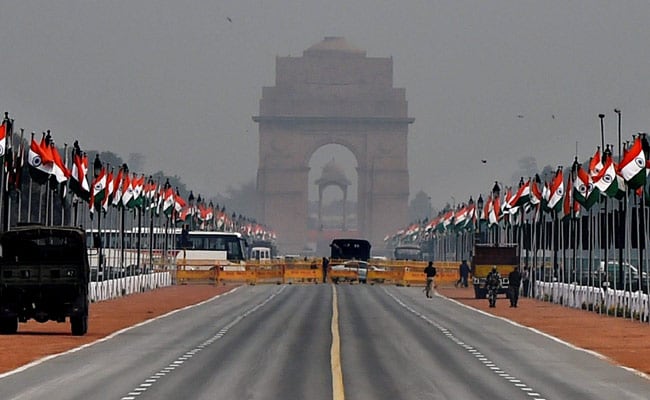

For decades, global development models have been dominated by two conflicting ideologies: communism/socialism and capitalism. These two paradigms have deeply shaped academic and political discourse, leaving little room for exploring alternative approaches. Anglo-European historians and scholars, confined to this binary mindset, have largely ignored other potential models. However, as India completes over 75 years of independence, it has evolved into a mature nation and democracy, meeting—and often surpassing—the benchmarks set by the West. This moment calls for a rethinking of India's developmental vision, one that is rooted in its own civilizational ethos: Param Vaibhav (Supreme Glory).
While capitalism views humans as inherently self-interested, with individual competition driving progress, socialism/communism assumes human nature can be moulded by changing material conditions and social structures to create cooperative, classless societies. The Indian model, however, acknowledges both material desires and higher moral and spiritual capacities. It seeks balance by promoting dharma (righteous living) alongside personal ambition, integrating self-interest with collective well-being.
Capitalism prioritises global trade and competition, driven primarily by national economic interests and corporate expansion. Socialism, in contrast, takes an internationalist stance, aiming for a global revolution to eradicate capitalism and imperialism. The Indian vision, centred on Param Vaibhav, is nationalistic with a focus on Akhand Bharat (Undivided India) and the concept of a unified Hindu Rashtra. However, this vision extends beyond national borders, envisioning India as a global moral and spiritual guide, leading by example in ethical and holistic development.
Capitalism often equates happiness with material success, consumerism, and individual freedom. In socialism, happiness is seen as a product of material equality and the absence of exploitation. The Indian model, however, defines true happiness (ananda) as a blend of material prosperity, moral righteousness, spiritual growth, and societal harmony. Well-being in this vision is holistic, encompassing physical, mental, and spiritual fulfilment.
While capitalism promotes cultural diversity as a market advantage, it often leads to cultural homogenisation through global consumerism. Socialism seeks to transcend national and cultural boundaries in favour of international solidarity. The Indian model, however, focuses on cultural unity under Sanatan Sanskriti (eternal culture), which aims for a unified national identity grounded in shared values and traditions, while respecting natural diversity. This model strengthens cohesion without suppressing individual or regional uniqueness.
Capitalism allows for social mobility but inherently accepts class divisions based on wealth, with opportunities determined by market success. Communism seeks a classless society where all individuals have equal status, rights, and opportunities. The Indian model emphasises social harmony and unity through the principle of One People, One Culture. It acknowledges diversity but strives for cohesion through shared cultural and moral values, ensuring that social harmony is paramount.
In capitalism, wealth is individual and accumulated through private enterprise. In communism, wealth is collective, and private property is viewed as a source of inequality and exploitation. In contrast, Param Vaibhav regards wealth (artha) as essential but sees it as one of the four pillars of life, alongside dharma (righteousness), kama (desires), and moksha (spiritual liberation). Wealth in this context is a means to achieve higher ethical and spiritual ends, not an end in itself.
Capitalism promotes a limited role for the state, where it primarily serves to protect property rights and maintain law and order. In communism, the state is a temporary tool to transition toward a classless, stateless society. In the Indian vision of Param Vaibhav, the state (Dharam Rajya) plays a critical role in upholding justice, ensuring moral order, and fostering equitable distribution of resources. The state is seen as a positive and enduring force for governance, welfare, and societal upliftment.
One Nation, One Culture, One Rashtra
The Indian vision of development, encapsulated in Param Vaibhav, strongly emphasises the concept of Ek Rashtra (One Nation) and Ek Sanskriti (One Culture), which in the Indian context refers to the unity of people under the principles of Sanatan Dharma. This vision aims to create a harmonious society where people, despite their regional, linguistic, and community differences, share common values and a collective identity.
This aligns with the notion of Akhand Bharat (Undivided India), where the cultural and civilisational unity of the Indian subcontinent is seen as essential for national strength. Development in this vision extends beyond economic growth and encompasses cultural resurgence, national unity, and moral leadership on the global stage.
The Indian goal of development, as envisioned in Param Vaibhav, offers a unique and holistic alternative to Western models of development. It seeks not just material wealth but aims for a state of supreme glory, where moral and spiritual values guide the nation's progress. Happiness, unity, and harmony are the true markers of this development, with the state playing an active role in ensuring justice, equality, and moral upliftment.
(Rajiv Tuli is an independent columnist and commentator)
Disclaimer: These are the personal opinions of the author
Track Latest News Live on NDTV.com and get news updates from India and around the world

